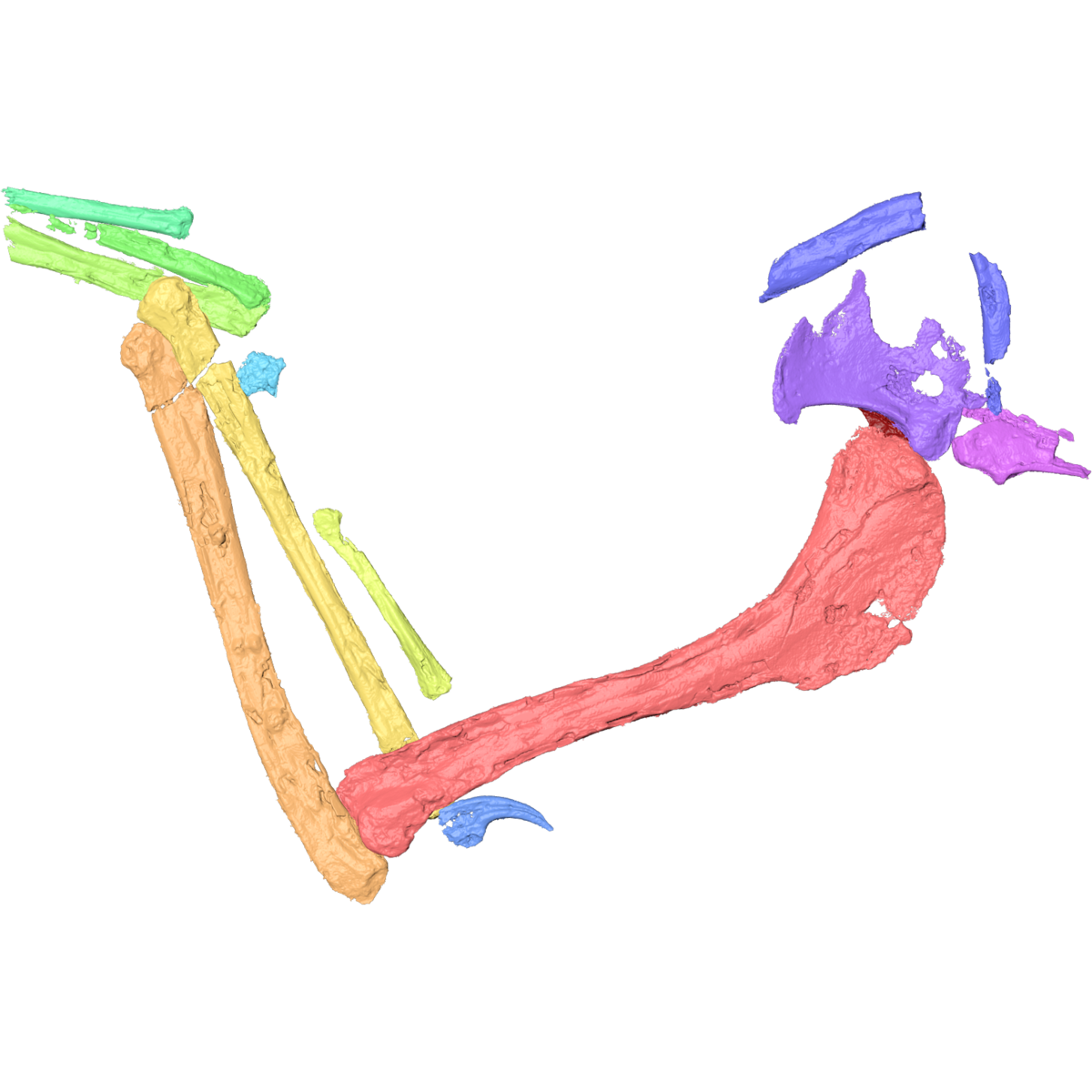
New Archaeopteryx discovered
- Date: Jan 2025
-
IPS scientists contributed to the unveiling of a new specimen of Archaeopteryx, discovered in the Mörnsheim Formation of Bavaria. Using computed tomography, the researchers revealed morphological details hidden within limestone, adding crucial insights into the evolution of early birds.
New Archaeopteryx fossil discovered
In a collaboration led by paleontologists Christian Foth and Eberhard Frey, scientists from the IPS contributed to the unveiling of the 14th known specimen of Archaeopteryx, the iconic "first bird." Discovered in the Mörnsheim Formation of Bavaria, the fossil has been dubbed the "Karlsruhe specimen" and is now part of the collection at the Natural History Museum Karlsruhe.
The specimen includes parts of the right forelimb and shoulder, fragments of the left forelimb, and both hind limbs, closely resembling those of the renowned Munich specimen of Archaeopteryx. It was scanned using X-ray computed tomography (CT) at the IPS Laboratory for X-ray Computed Laminography and Tomography, uncovering important morphological details concealed within the limestone matrix.
Despite the fossil’s significant geological alteration over time, key features such as the furcula, coracoid, and forelimb bones confirm its classification as Archaeopteryx. Although the specimen’s preservation and the unresolved taxonomy of Archaeopteryx at the species level prevent a more precise identification, the Karlsruhe specimen adds valuable data to the evolutionary puzzle of bird origins.
Original publication
C. Foth, T. van de Kamp, H. Tischlinger, T. Kantelis, R.M. Carney, M. Zuber, E. Hamann, J.J.W. Wallaard, N. Lenz, O.W.M. Rauhut, E. Frey: A new Archaeopteryx from the lower Tithonian Mörnsheim Formation at Mühlheim (Late Jurassic). Fossil Record 28 (2025) 17-43. doi: 10.3897/fr.28.e131671

